The problem with the current Mustang, as far as Ford’s concerned, isn’t the car itself.
When it first launched two and a half years ago, its retro-inspired looks and hard-charging speed whipped the world into such a frenzy, chief engineer Dave Pericak was promoted to Ford Performance’s top spot quicker than he could yell ‘yee-haw’.
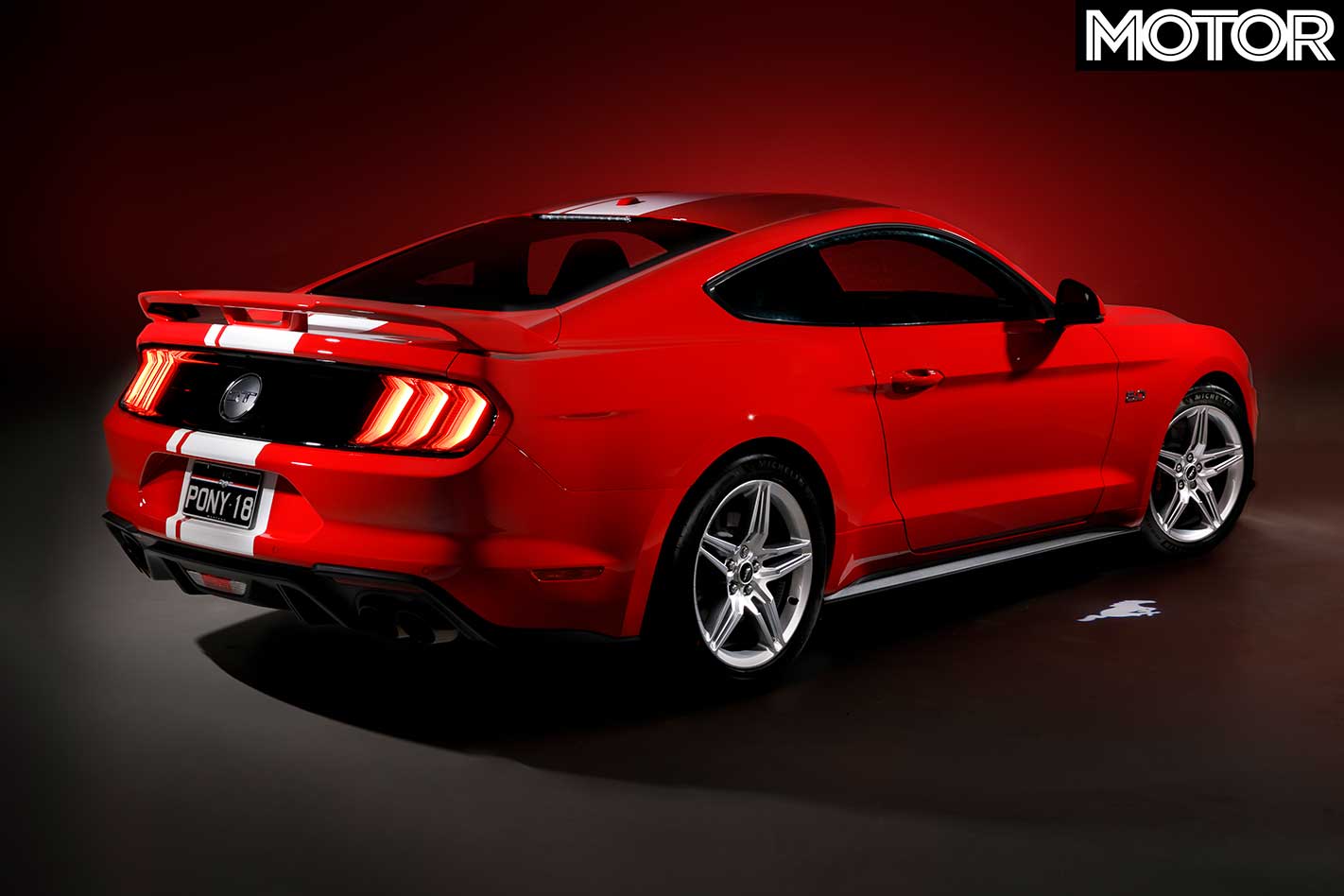
No, the Mustang’s real problem lurks in Detroit. Chevrolet unsheathed its newest Camaro only months after Pericak’s Mustang launched. It was lighter, fitter and meaner than before. So rather than light cigars on a job well done at the time, Ford instead began training up its thoroughbred.
What you see here is the result. A new Mustang for 2018, armed with a 10-speed automatic transmission, a ‘thoroughly reworked’ V8, and sharper suspension. It’s been moulded with meaner looks and its aerodynamics honed to slice the air more effectively.
However, flipping a mid-life refresh into a Camaro-crushing revamp in that timeframe was no easy task. Carl Widmann, Pericak’s succeeding chief engineer, accepted the job in January, 2015. Widmann’s hefty experience as a vehicle engineering manager would prove crucial in coordinating such an upgrade. But he reveals there was more to it during an exclusive interview with MOTOR.
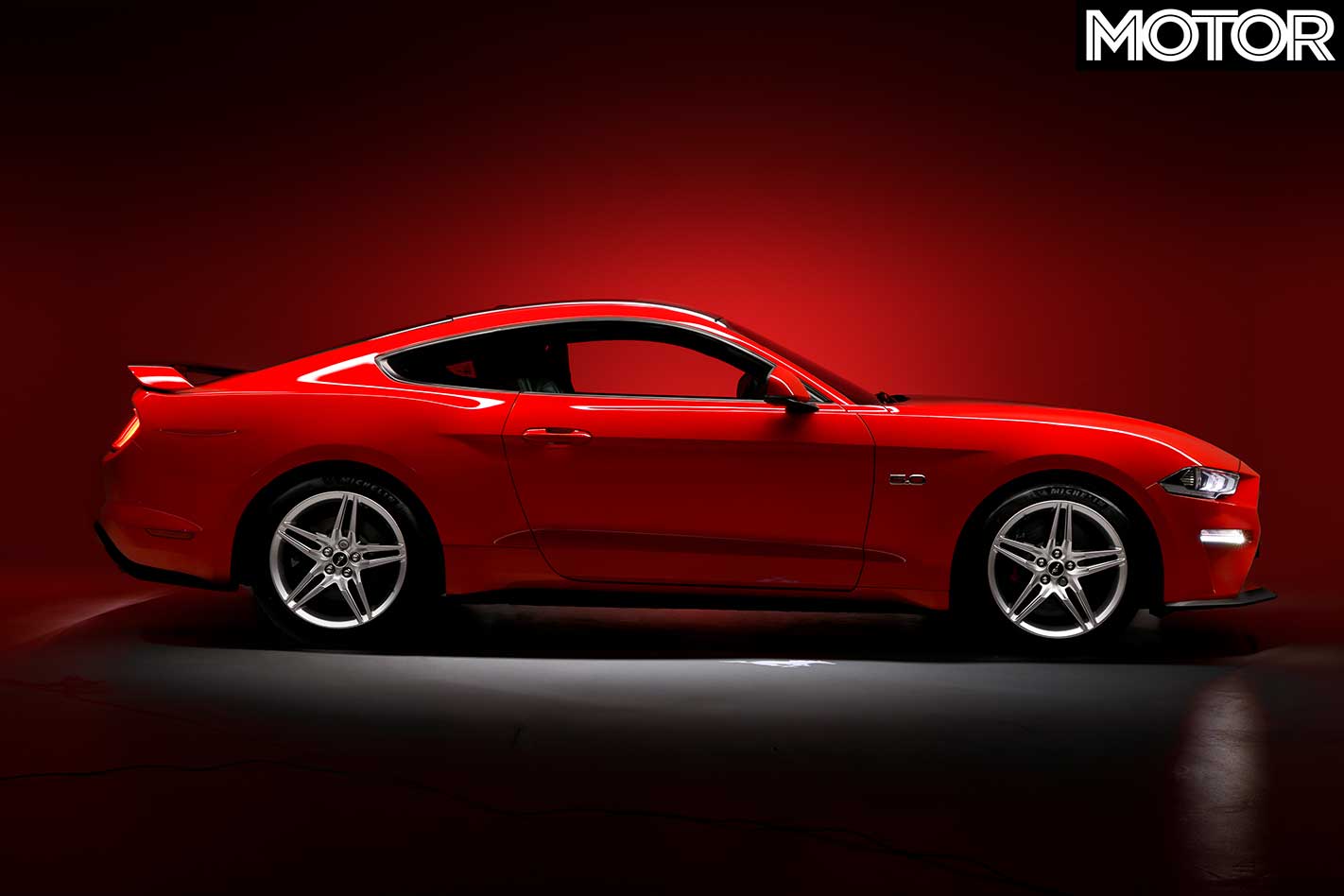
“In the near history before Mustang I was actually in charge of all aerodynamics, powertrain, cooling and heat management for North America,” he says.
The perfect man, then, to tackle one of the new Mustang’s key targets. “The challenge was ‘what was the maximum amount of power we could get out of the five litre?’ That was the going-in push.”
Because the 5.0-litre Coyote V8 in the Mustang is hardly old-hat, its aluminium block is topped by double overhead cams with variable timing, finding more flow required the use of something that sounds like it belongs in a science fiction movie.
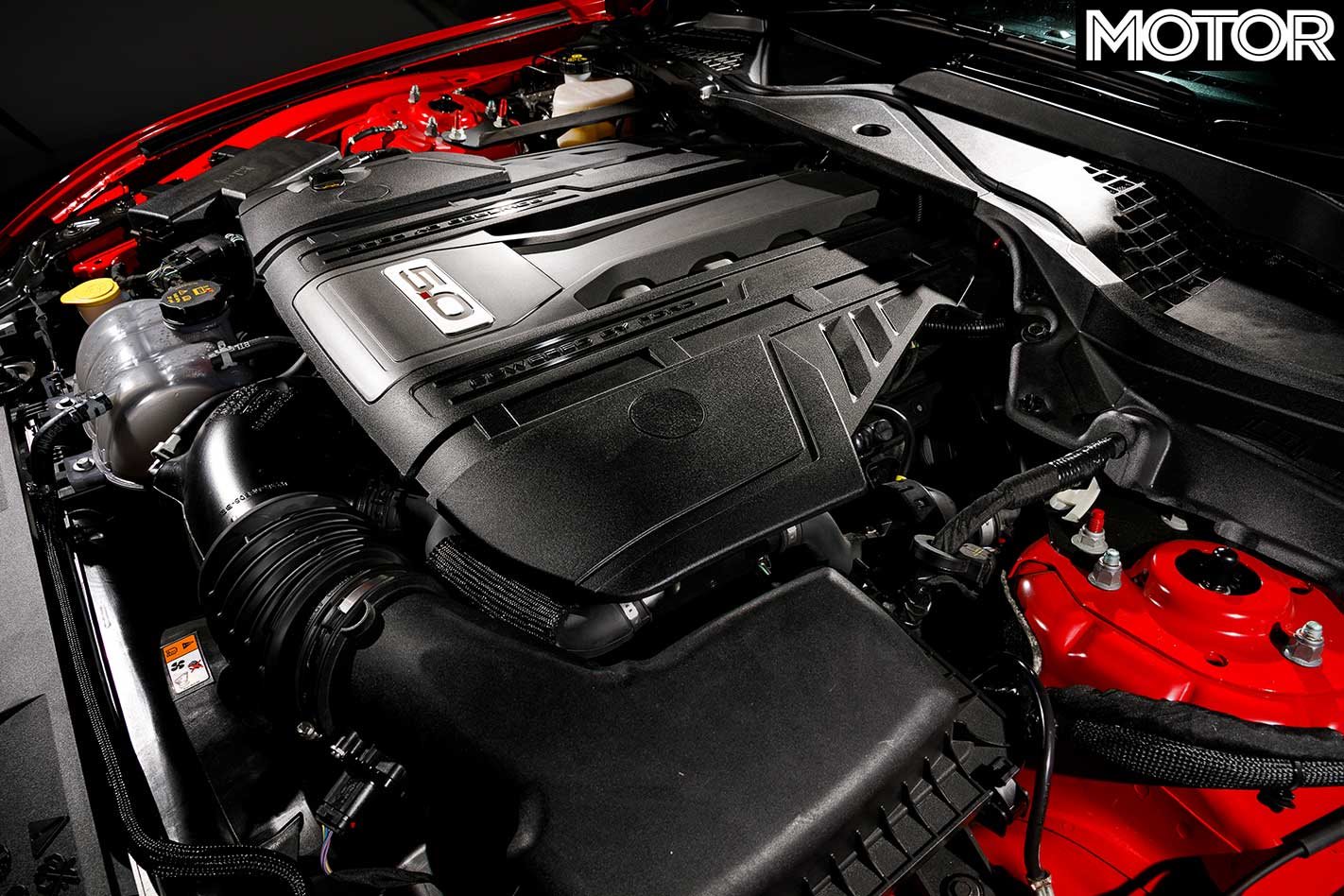
“The intake and the exhaust manifold, we made them a little bigger, because we had a little bit more room when we took the liners out and went to plasma-spray bores.”
He’s talking about the extra 84cc that’s appeared on the Mustang V8’s specification sheet, which boosts capacity from 4951cc to 5035. Pistons snuggle into 0.8mm wider bores, which then allowed 0.3mm larger valves to be thumbed into the Coyote’s re-designed cylinder heads.
While this expanded its lung capacity, the next step was raising the Coyote’s heart rate, so a 7500rpm redline was targeted from the beginning (up 500rpm).
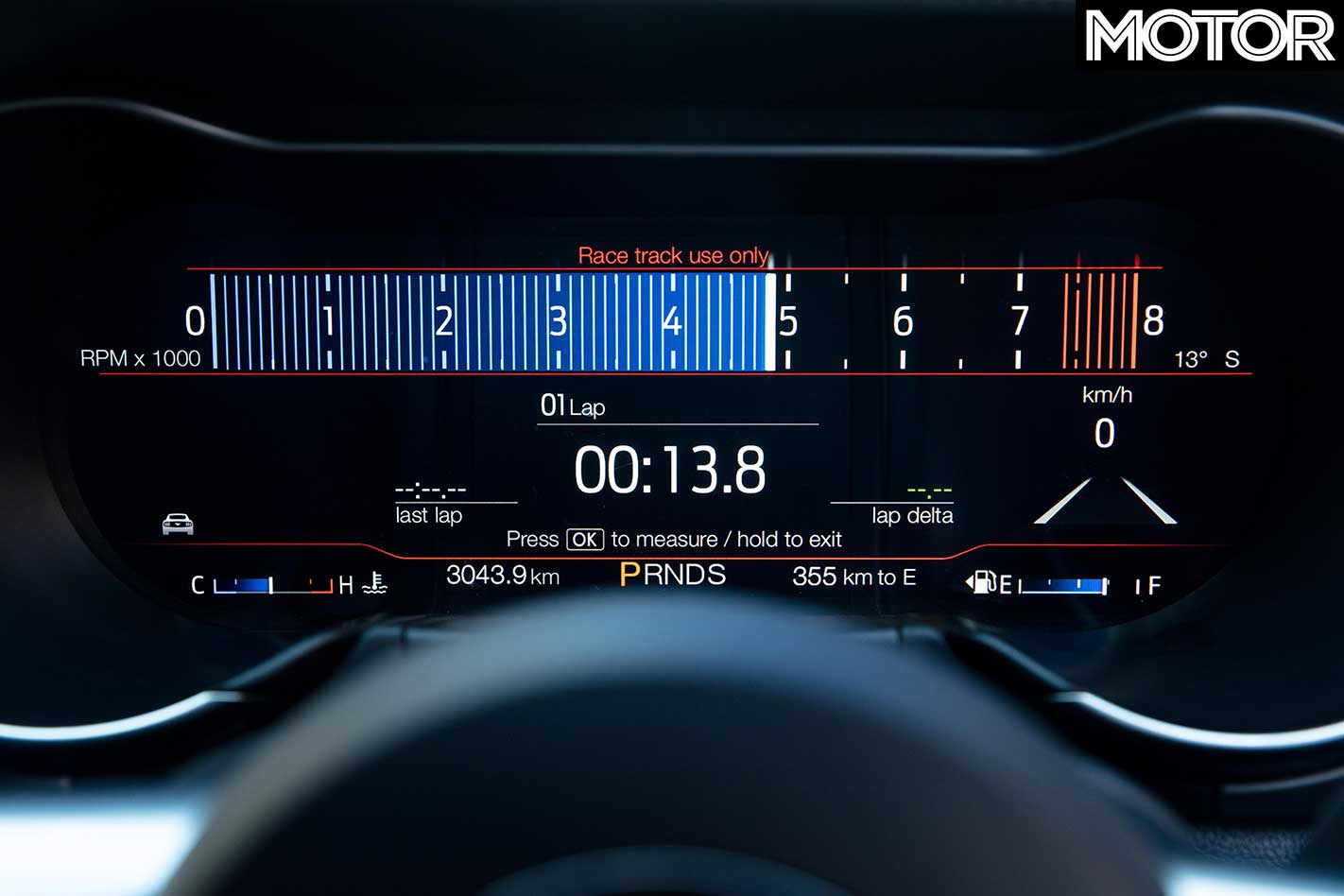
“All the thread bolt valves, keepers, and all that stuff going in made sure we met that requirement. Crankshaft dampers had to meet that requirement from being able to spin that mass up that high.” Yep, the Mustang can now rev as hard as a Porsche 911.
The next step was to extract a bigger bang. “They run 16 injectors instead of eight,” Widmann says about its new dual-fuel injection system, “[this] improves the fuelling strategy we use, so that opened up some spark capability.” With two extra knock sensors and the precision of direct injection (DI), the compression ratio was ratcheted to a towering 12.0:1.
“We don’t use the DI a lot at idle,” he adds, “so you don’t have that huge ticking factor that you get with DIs.”

What you get instead is 343kW at 7000rpm and 569Nm at 4600rpm using America’s SAE ratings. Our outputs, however, are set by DIN testing methods, which fit ancillaries and the exhaust system to the engine while it’s on the dyno. So Aussie V8s are good for 339kW and 556Nm. Or 23kW and 26Nm more than before.
Things snowballed from here, as the new outputs demanded more from the car’s driveline. “The manual had to change because we had too much torque coming out of the new Coyote,” Widmann says, “we knew for the fact, we were getting to the limits of a single clutch, basically.
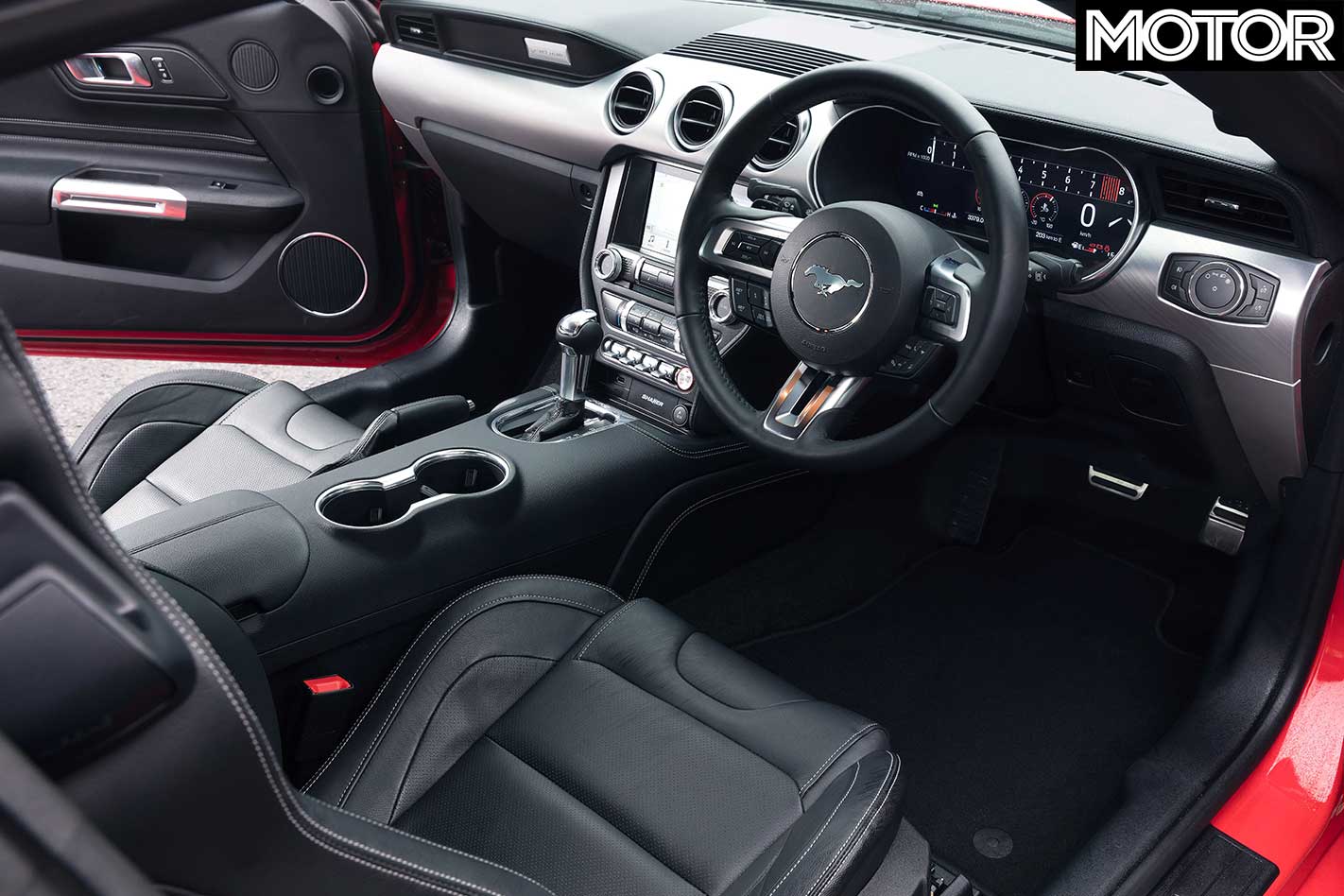
“So we went to a twin-disc, dual mass flywheel – similar to what we have on the GT350 – different supplier, different design, but the same concept whereby you can get more clamp load, more torque capability.” You won’t have to hire a personal trainer, either, to build up the leg strength to use it. “When you drive an ’18 [Mustang] you’ll notice clutch efforts are actually down 15 to 20 per cent.”
You’d think swapping cogs yourself would crown you king in a Mustang, but that’s set to change for 2018. Ford’s co-developed (with GM, of all companies) a new 10-speed automatic for rear-drive applications. And with Chevrolet already stuffing it in the wicked Camaro ZL1, the Mustang seriously needed to play catch-up.
Of course, with Mustang owners salivating over racetracks as much as drag strips these days, the new 10R80 ’box needed to not only upshift like a dual-clutch, but also shed a bunch of gears when being hurried into a corner. So Ford gifted Widmann’s powertrain team an automatic with state-of-the-art hydraulics. That gave them the ability to calibrate it for a wide range of scenarios, with three modes of operation.
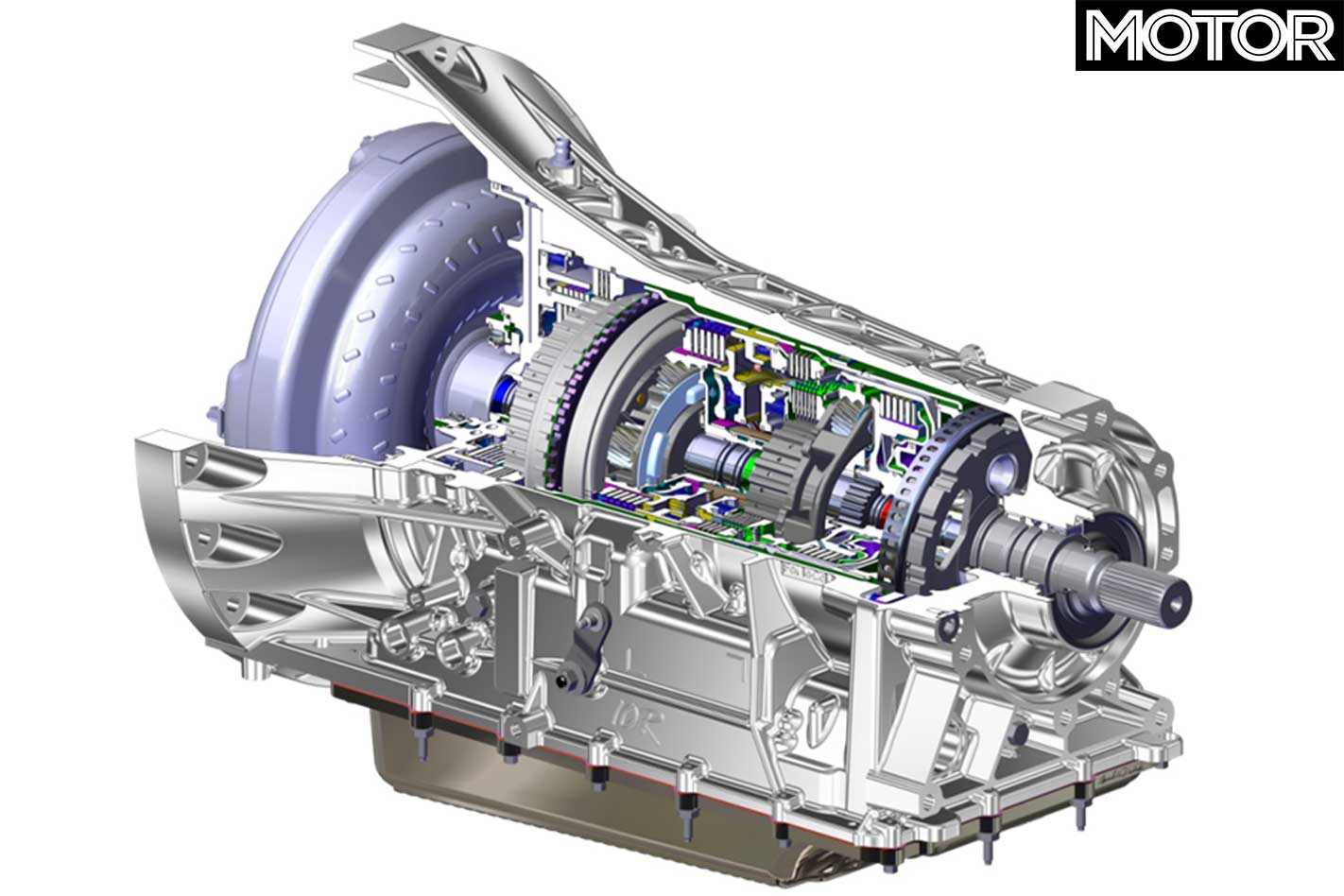
“[Sport mode] is really a ready to go gear state,” he tells us, “so when you drive that, the car’s really egging you on. It stays exactly at maximum torque if you’re going to jump back in on the pedal.
“And then if you select drag-strip mode, from the mode selection switch, what that then does is, it’s got the capability to not take torque out at the shift. We don’t drop torque at the 1-2, 2-3, 3-4. Because you basically get that surge with all that inertia you don’t have to speed it back up again as you drop torque. That’s how we get most almost three tenths of a second 0-60 with that approach to a shift.”
Yep, the 2018 Mustang GT with an automatic will hit 100km/h in a claimed 4.3 seconds. That’s 0.3sec quicker than the new manual-equipped car and 0.5sec quicker than the old one.
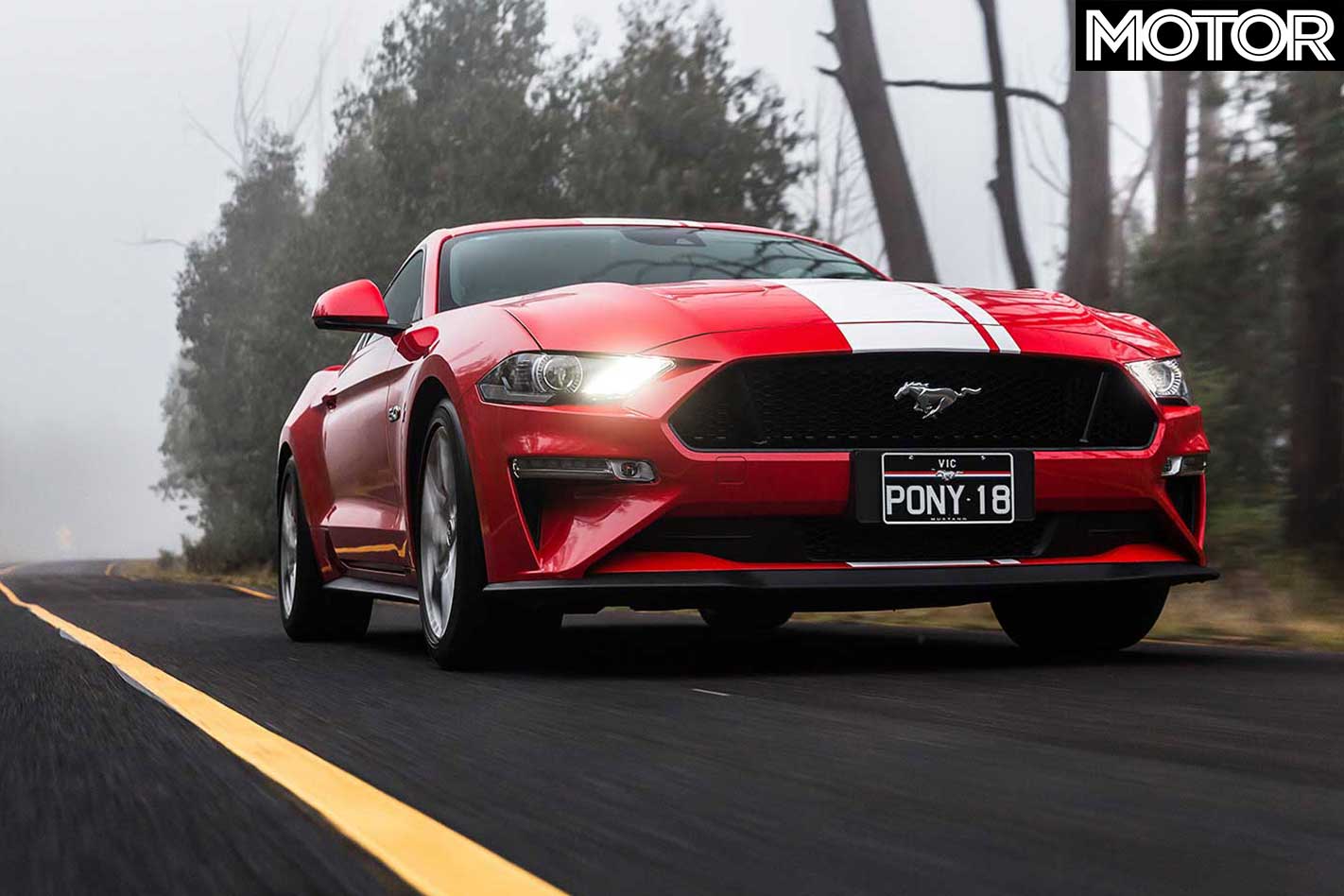
To cope with the accelerative force straining its rear bits, Ford upgraded its propshaft and pinched the thicker half-shafts from a GT350. Then there were its tyres. Ford leant on its relationship with Michelin – who helped out with the Ferrari frightening GT – to score the latest Pilot Sport 4S.
While they glue to the road like warm gum, and have better roll resistance, Widmann says his team prized their tread stiffness most. That’s because the new Mustang welcomes magnetically operated adaptive dampers, as an option, just like the circuit conquering GT350. Less tyre deformation means more response and control.
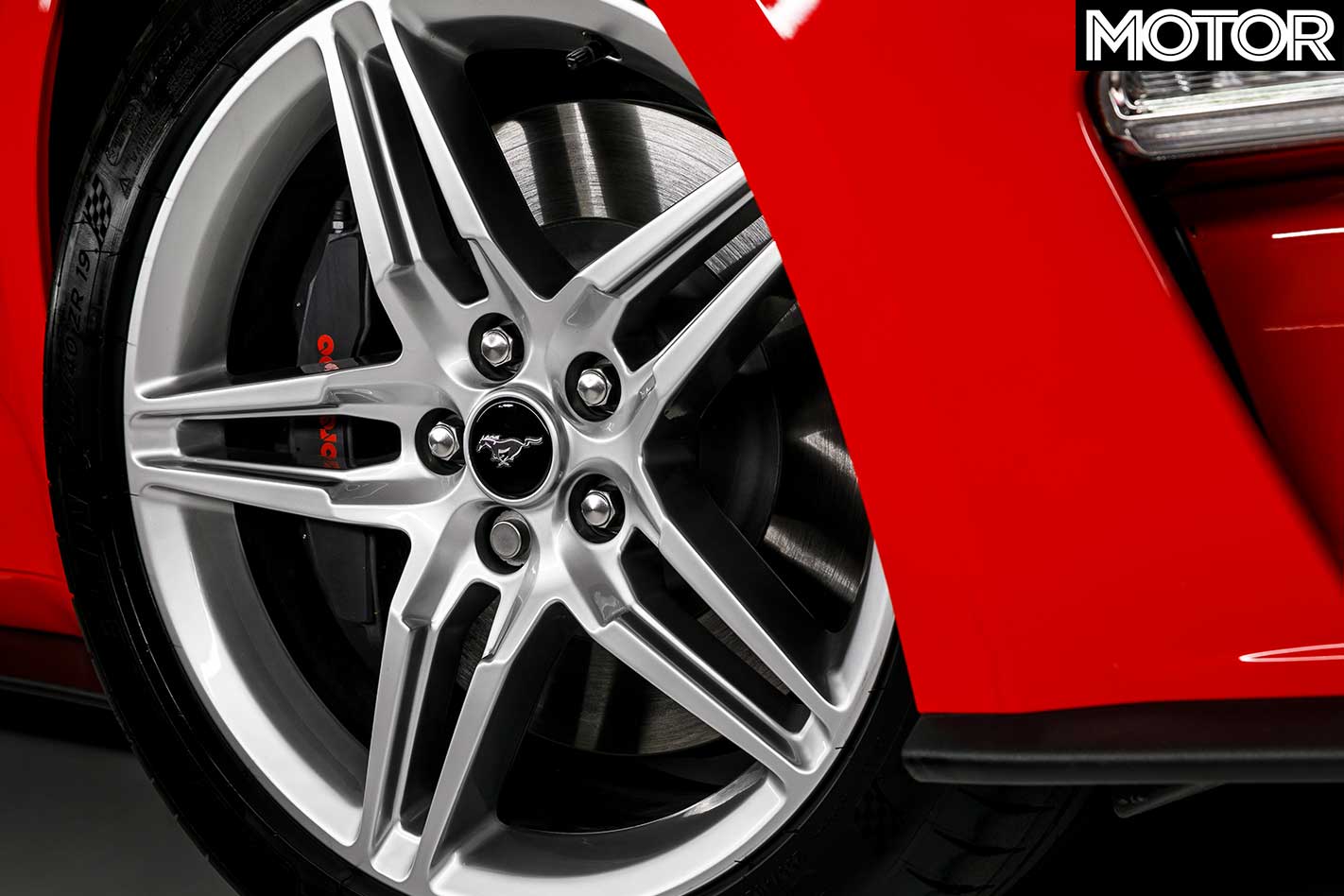
The amount of grip generated is now so large that the front steering knuckles have been beefed up to house the GT350’s bigger wheel bearing. Even the regular dampers have been uprated.
Unfortunately, the Mustang’s good looks aren’t the best for finding front-axle downforce. So work was put into massaging its mug into something more aggressive and aerodynamic. LED technology allowed thinner headlights, lowering the hood and broadening the grille. An engine under-tray was fitted to smooth airflow, while a new off-the-deck rear-spoiler features. The result is less drag and lift.
After having figured out how to have the Mustang better grip the ground, Ford turned its attention to how the new car would blast its war cry. Feedback on the current model focused on the V8’s timbre, with people saying they wanted to hear something more “visceral”.
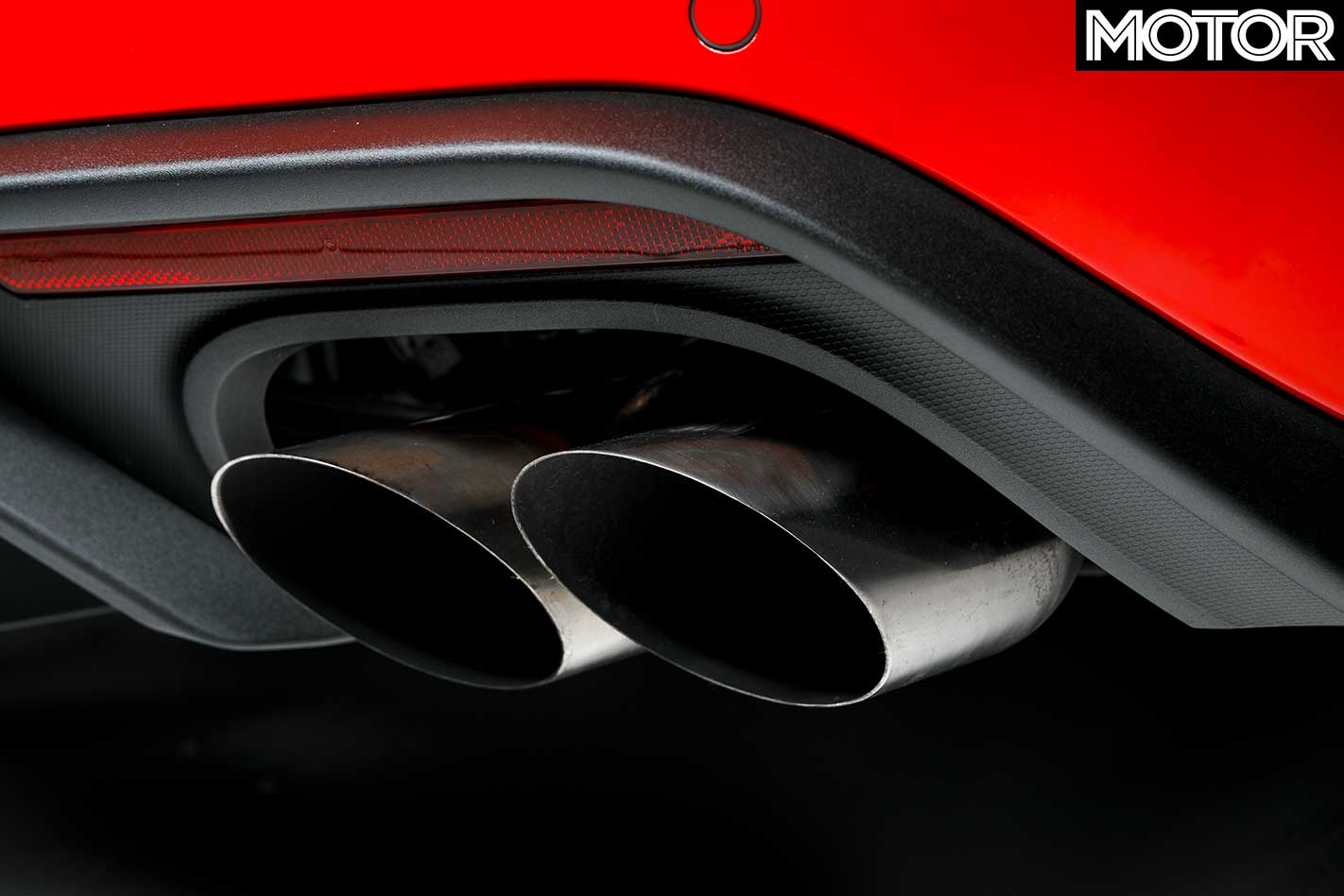
But freeing up the Coyote’s growl wasn’t straightforward. Noise and emissions rules differ from one region to the next. This is where the advantage of an active system shone through. Ford could dial in a sound that progressively builds without using excessive baffling.
On top of this, Australia’s unique regulations meant our system scores special tuning and muffler baffles, unshackling more horses. “There are some benefits in the active exhaust that came across in the [Australian] homologation numbers for 2018, because it has more flow than the 2017 exhaust system. On the V8 it did provide a little benefit.”
When asked what he’s most proud of, though, Widmann doesn’t boast about its drag mode, cornering prowess or kilowatts. “To get that [digital] cluster to work,” he says, “was a tremendous challenge for the program.”
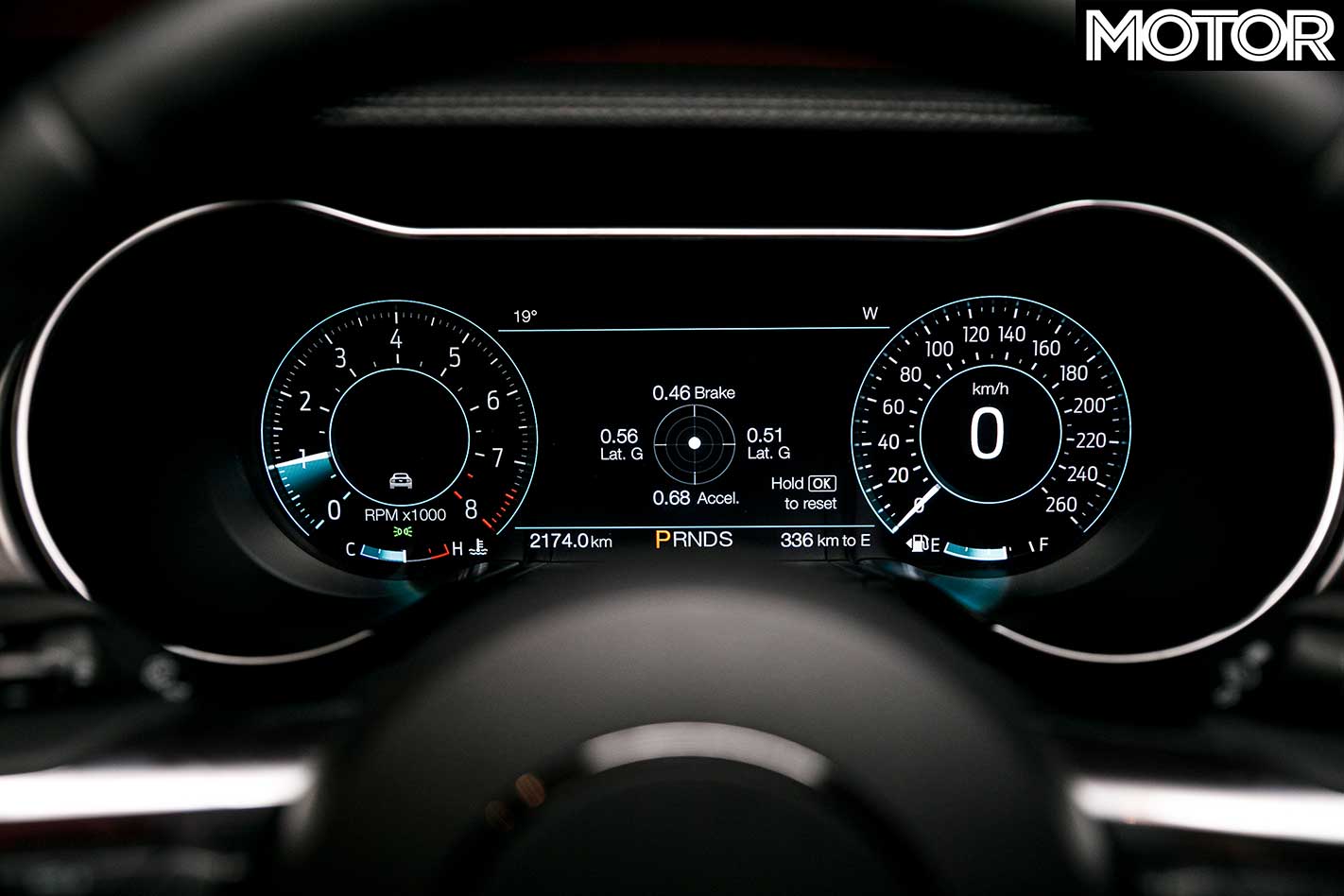
Dedicated teams that programmed the GT’s own 10-inch unit worked on the new 12-inch system’s graphics and interface. A code-writing company was even reeled in to help. But the new unit has delivered, he says. “We’ve got the next generation of capability versus what [the GT’s team] were working with.”
As part of the Premium Plus package (standard on Aussie Mustangs) which brings fancier surface materials, it should go a long way to silencing critics of the Mustang’s interior. Track junkies might also appreciate the new optional powered Recaro seats inside, too.
That’s more stuff to pay for, and a manual fastback V8’s price inflates by $5500 to $62,990, but if overseas reports are anything to go by, they are changes for the better. We’ll just have to wait to see if it’s enough to stave off Chevrolet’s Camaro in coming months. Brace for the beginning of a whole new war where red and blue forces face off again.
Six Tasty Mustang Morsels
01/Cluster Cluster is now a 12-inch digital unit and changes RPM and speed display to cater to each drive mode, spanning Normal, Sport, Track, and Drag.
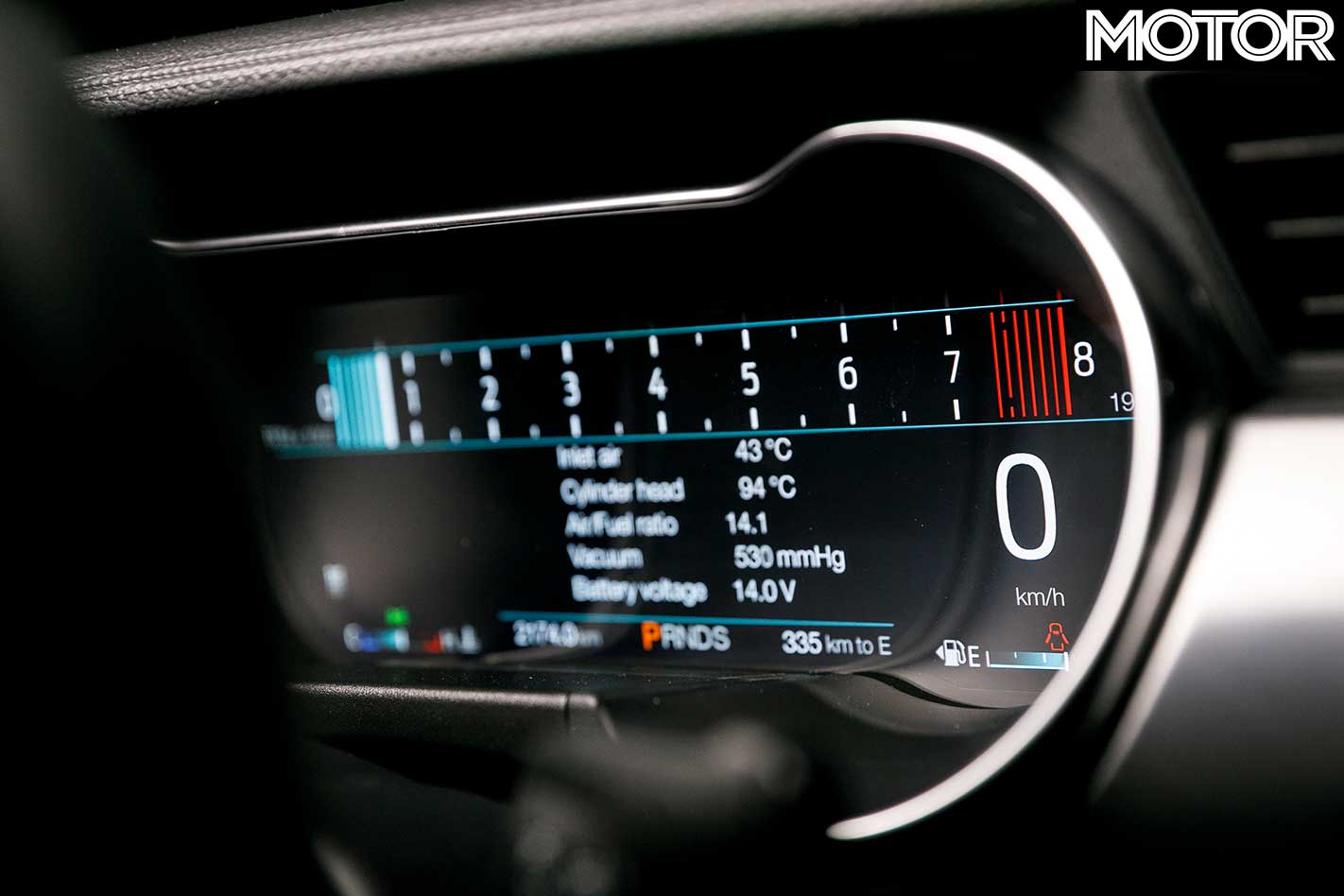
02/Dynamics Grippier tyres required an upsized swaybar and sturdier toe-links in the V8’s rear end. EcoBoost models carry over 2017 wheels and tyres.
03/Exhaust The exhaust has four settings: Quiet, Normal, Sport, and Track. It can be adjusted separately through new ‘pony button’ on the steering wheel.
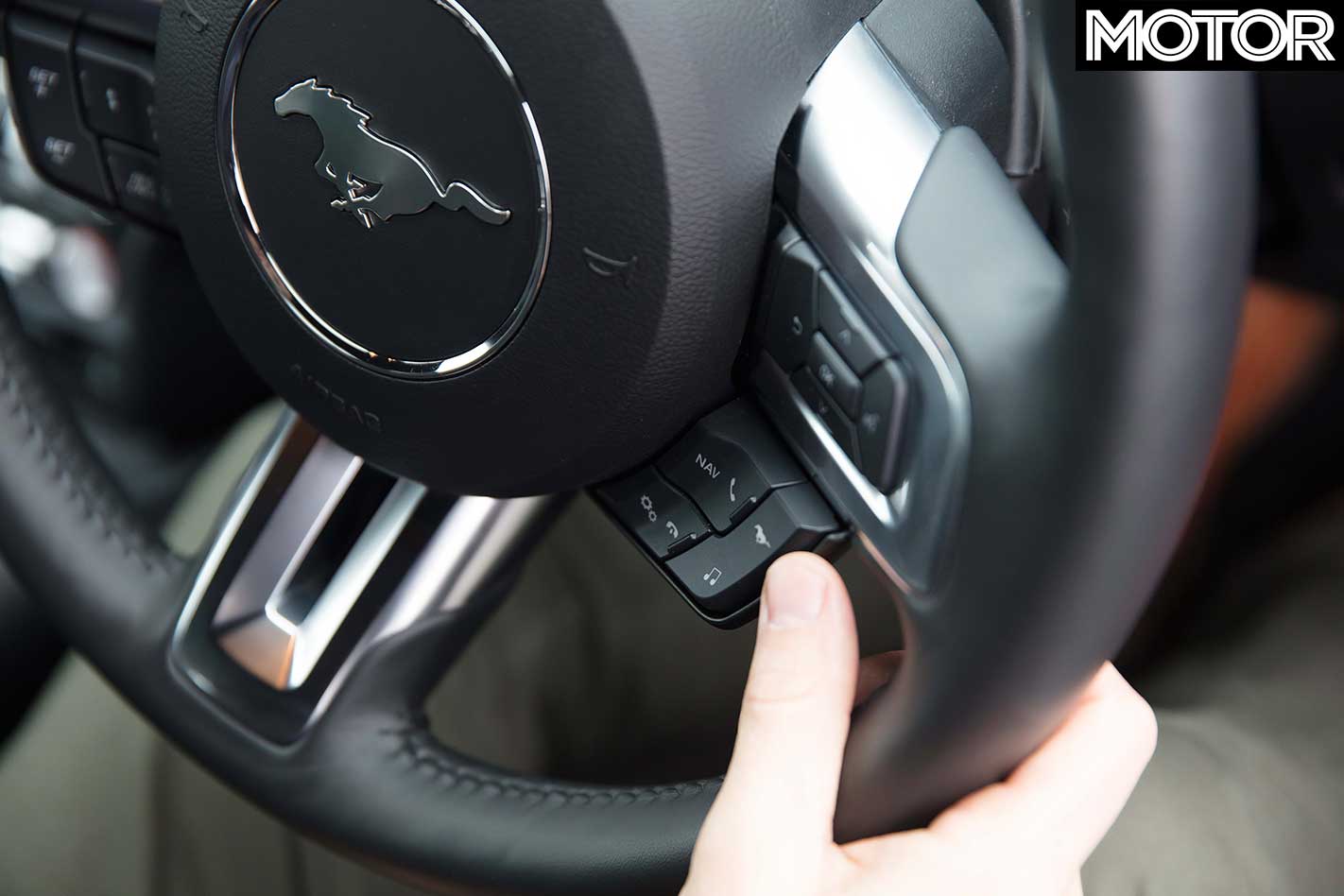
04/Gearbox 10-speed ‘box uses four planetary gearsets and six clutches. New low-parasitic pumps control them with ultra-thin fluid. Torque converter is lighter, too.
05/Shift Duties Widmann says the auto can engage top gear going as low as 70km/h. It’s shortly stacked, with six ratios above 1:1. The manual has only three.
06/Boost Those with plans for boost needn’t worry about new dual-fuel injection and high compression, Ford’s already built a factory supercharger pack.
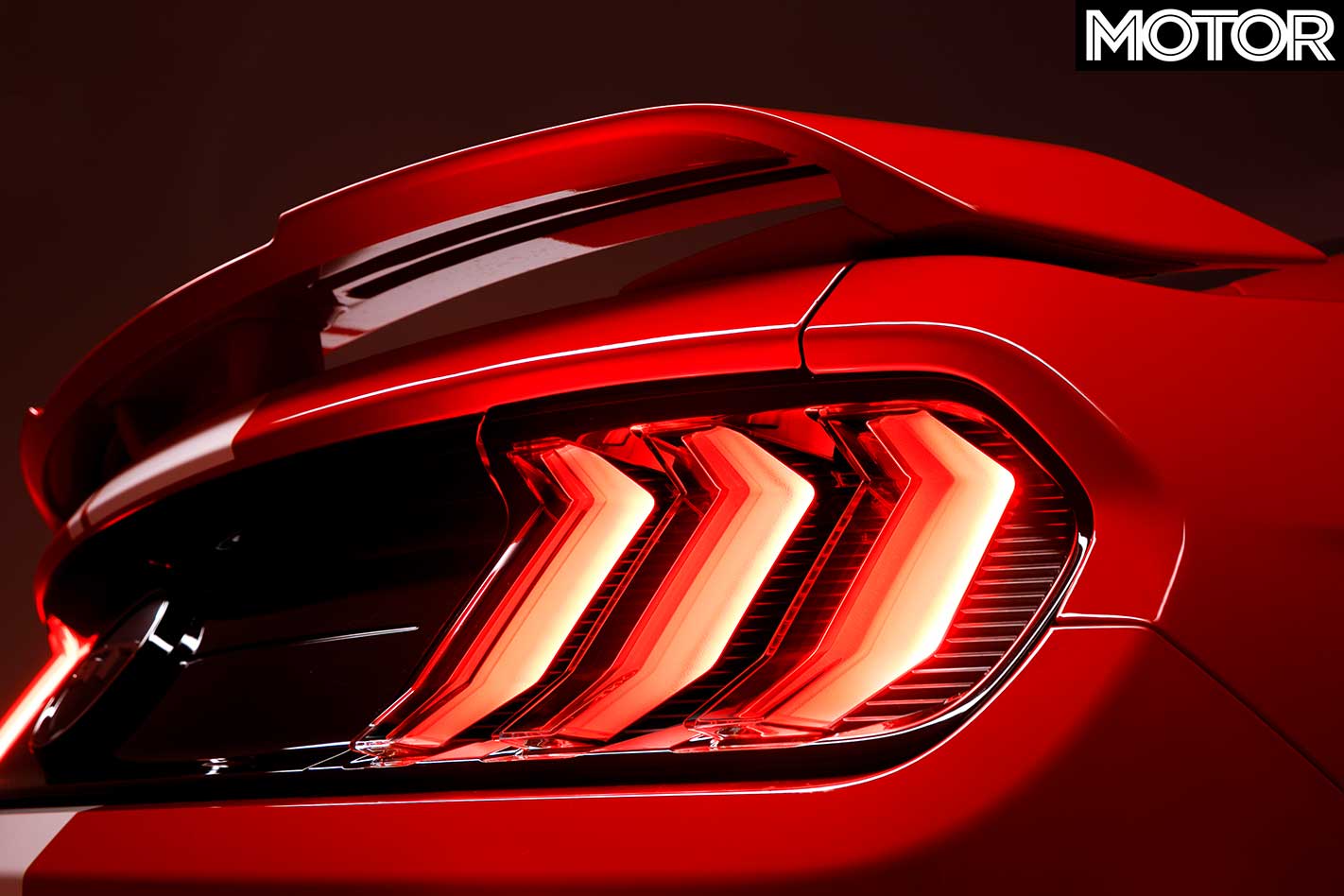
FAST FACTS 2018 Ford Mustang GT
BODY: 2-door, 4-seat coupe DRIVE: rear-wheel ENGINE: 5035cc V8, DOHC, 32v BORE/STROKE: 93.0 x 92.7mm COMPRESSION RATIO: 12.0:1 POWER: 339kW @ 7000rpm TORQUE: 556Nm @ 4600rpm WEIGHT: 1668kg (1681kg automatic) POWER-TO-WEIGHT: 203kW/tonne (202kW with auto) TRANSMISSION: six-speed manual; 10-speed automatic SUSPENSION: struts, adaptive dampers (optional), anti-roll bar (f); multi-links, adaptive dampers (optional), anti-roll bar (r) L/W/H: 4789/1916/1382mm WHEELBASE: 2457mm TRACKS: 1642/1642mm (f/r) STEERING: electrically assisted rack-and-pinion BRAKES: 380mm ventilated discs, 6-piston calipers (f); 330mm ventilated discs, single-piston calipers (r) WHEELS: 19.0 x 9.0-inch (f); 19.0 x 9.5-inch (r) TYRES: Michelin Pilot Sport 4S; 255/40 R19 (f); 275/40 R19 (r) PRICE: From $62,990 (manual base GT)






